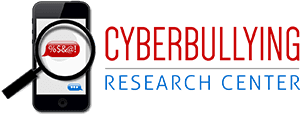Below is the model bullying policy made available by the Colorado State Department of Education for school districts within Colorado to use when crafting their own bullying and cyberbullying policies. Each state’s policies vary when it comes to how they: define bullying, harassment, threats, intimidation, and violence; expect reporting and investigating to be carried out, specify response strategies, define penalties, and prescribe certain types of prevention programs and practices. We recommend that you review and consider updating your own bullying policy on an annual basis with input from educators, administrators, counselors, mental health professionals, parents, and students themselves. That will optimize the likelihood that the policy you implement achieves its goals. Last Updated: July 26th, 2019 URL of Source: https://www.cde.state.co.us/mtss/model_bullying_prevention_policy NOTE: Colorado school districts are required by law to adopt a policy on this subject and the law contains some specific direction as to the policy content or language. This model policy contains the content/language that the Colorado Department of Education believes best meets the intent of the law and best practices; however, the district should consult with its own legal counsel to determine appropriate language that meets local circumstances and needs. Districts have discretion to determine the specifics of their bullying prevention policies and supports. Statement of Purpose The Board of Education supports a positive school climate, conducive to teaching and learning that is free from threat, harassment, and any type of bullying behavior. The purpose of this policy is to promote a safe school climate where all types of bullying are regarded as unacceptable. Bullying and other behaviors as defined below are prohibited on district property, at district or school-sanctioned activities and events, when students are being transported in any vehicle dispatched by the district or one of its schools, or off school property when such conduct has a nexus to school or any district curricular or non-curricular activity or event. Prohibited Behavior
- Bullying
- Retaliation against those reporting bullying and/or other behaviors prohibited by this policy
- Making knowingly false accusations of bullying behavior
- Partnering with families and the community to increase their awareness of the warning signs that students are being targeted or perpetrating bullying, as well as basic bullying prevention and intervention strategies.
- Designating a team of persons at each school who advise the school administration on the severity and frequency of bullying. The team of persons at the school may include, but need not be limited to, school resource officers, social workers, school psychologists, health professionals, mental health professionals, counselors, teachers, administrators, parents, and students.
- Surveying students’ impressions of the severity and frequency of bullying behaviors in their school.
- Investing in positive school climate efforts that clearly define, teach, and reinforce prosocial skills. This includes intentional efforts to promote positive relationships between staff and students as well as students with other students.
- Include students in the development, creation, and delivery of bullying prevention efforts as developmentally appropriate.
- Character building for students that includes, but is not limited to, age-appropriate, evidence-based social and emotional learning as well as information on the recognition and prevention of bullying behaviors.
- Measuring the implementation fidelity of bullying prevention best practices, including the adherence to policy and intervention strategies.
- Training school staff on an annual basis regarding the school’s bullying prevention practices and this policy such that staff know their responsibilities in supporting students and reporting bullying incidents.
- Initiate efforts to change the behavior of students engaged in bullying behaviors.
- Support targets of bullying.

